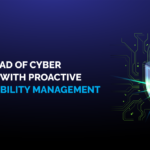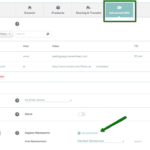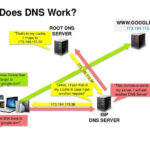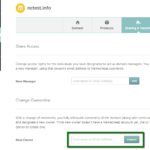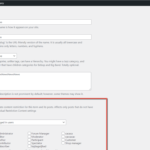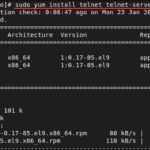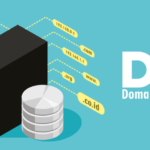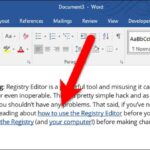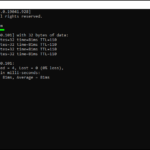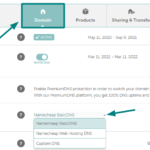
Phishing is a tactic used by cybercriminals to steal sensitive information, such as passwords or credit card details, by posing as a trustworthy source. They trick individuals into clicking on links that lead to fake websites designed to capture their data.
These attacks often create a sense of urgency—claiming there’s a security issue or a need to reset a password—making it harder for victims to think critically. Phishing attempts can impersonate real organizations or individuals, making them seem more convincing.
To protect against phishing, it’s important for individuals and businesses to verify the sender’s identity before clicking on links or sharing personal information. Utilizing security software and educating oneself on how to recognize phishing attempts can also be effective defenses.
Social Engineering
Social engineering involves manipulating people to gain access to confidential information. Unlike other hacking methods that rely on technical vulnerabilities, social engineering exploits human psychology.
Common tactics include phishing emails that trick recipients into clicking on harmful links or revealing login credentials. Another example is pretexting, where an attacker fabricates a scenario to extract personal information.
Falling for social engineering can lead to financial loss, identity theft, or reputational damage. Organizations may experience data breaches if employees are deceived, resulting in serious legal and financial repercussions.
Password Cracking
Password cracking can be executed through various methods, including brute force attacks, dictionary attacks, and rainbow table attacks.
- Brute Force Attacks: Attempt every possible password combination until the correct one is found.
- Dictionary Attacks: Use a list of common passwords to guess the correct one.
- Rainbow Table Attacks: Leverage precomputed tables of hashed passwords to speed up the cracking process.
To safeguard against these methods, users should create strong, unique passwords, employ multi-factor authentication, and change passwords regularly. Password managers can help manage secure passwords effectively.
The risks of password theft include unauthorized access to sensitive information, financial losses, and damage to personal or business reputations. Data breaches can lead to compromised confidential information.
Denial of Service (DoS)
A denial of service attack aims to make a company’s online services unavailable by overwhelming its servers with excessive traffic. This disruption can result in lost revenue, reputational damage, and customer service issues.
Often, these attacks involve botnets—networks of compromised computers—that flood a target with traffic. Amplification attacks exploit weaknesses in internet protocols to increase the volume of malicious traffic.
Companies can defend against DoS attacks by using firewalls, intrusion detection systems, and content delivery networks to manage traffic. Regular software updates and vulnerability patches are also critical.
Advanced Hacking Techniques and Their Methodologies
SQL Injections
SQL injection is a cyber attack where malicious SQL code is inserted into input fields, allowing attackers to access or manipulate a database. This method exploits software vulnerabilities and can result in severe consequences, such as unauthorized access to sensitive information.
To defend against SQL injections, organizations should implement input validation, use parameterized queries, regularly update software, and conduct security audits.
Bait and Switch
Bait and switch involves deceiving users into clicking on a link that leads to a malicious site or downloads harmful software. Cybercriminals often create fake websites that mimic legitimate ones, such as banking sites, to gather personal information.
To combat bait and switch tactics, individuals and organizations must remain vigilant and educate themselves on recognizing these threats.
Clickjacking
Clickjacking hides malicious links behind legitimate-looking elements, tricking users into activating the hidden link when they click on something that appears harmless. This can be achieved by overlaying a transparent iframe over a legitimate website.
To protect against clickjacking, individuals and businesses should use browsers with built-in protections, keep software updated, and consider security tools like NoScript. Website owners can also implement HTTP headers to prevent clickjacking.
Watering Hole Attacks
Watering hole attacks target specific groups by infecting websites they frequently visit. Attackers exploit the trust users have in these sites to compromise their devices.
Organizations can protect against these attacks by implementing web filtering, regularly updating software, and educating employees about the risks of visiting certain sites.
Hacking Techniques: The Use of Malicious Software
Virus
A virus is a type of malicious software that can replicate itself and spread to other programs and systems. Unlike other malware, viruses require a host program to operate and typically attach to executable files.
To guard against viruses, users should utilize antivirus software, keep their systems updated, exercise caution with email attachments, and regularly back up important data.
Trojan
A Trojan is a type of malware disguised as legitimate software, tricking users into allowing it access to their systems. Unlike viruses, Trojans do not replicate themselves.
To prevent Trojan infections, users should employ antivirus software, maintain system updates, and be cautious with file downloads.
Keylogger
A keylogger records a user’s keystrokes, capturing sensitive information like passwords and credit card numbers. This data is often sent to attackers for malicious purposes.
To protect against keyloggers, individuals and organizations can use reputable antivirus software, maintain strong passwords, and consider implementing two-factor authentication.
Emerging Trends in Hacking Techniques
AI Targeting
AI targeting uses machine learning algorithms to identify and exploit system vulnerabilities, enabling hackers to conduct sophisticated attacks that traditional cybersecurity methods may struggle to detect.
Organizations can mitigate the risks associated with AI targeting by utilizing advanced AI-based threat detection systems, regularly updating their software, and training employees to recognize potential threats.
Predictions about Future Hacking Methods
Future hacking techniques may increasingly involve advanced AI, enabling hackers to automate the identification and exploitation of vulnerabilities more efficiently. Organizations will need to adopt proactive cybersecurity strategies, investing in AI solutions to quickly respond to emerging threats.
Protective Measures Against Hacking Techniques
Cybersecurity Best Practices
Basic hacking techniques, like phishing and social engineering, rely on deception to exploit individuals and organizations. To safeguard against these threats, it’s essential to keep software updated, use strong authentication, and practice secure coding. Regularly backing up data and implementing a robust cybersecurity policy can also reduce risks.
Cybersecurity Tips for Businesses
Businesses should regularly train employees on how to recognize phishing and social engineering attacks. Strict password policies, including strong passwords and multi-factor authentication, can help defend against password cracking and denial of service attacks.
Regular software updates and the use of web application firewalls can protect against advanced hacking techniques like SQL injections and clickjacking.
Intellicomp’s Role in Safeguarding Against Data Breaches
Intellicomp employs advanced encryption, network segmentation, multi-factor authentication, and regular security audits to defend against data breaches. These measures create layers of protection for sensitive data, identifying vulnerabilities and strengthening security protocols.
Practical Insights into Hacking Techniques
Real-World Examples of Phishing
Phishing can take many forms, such as deceptive emails and fake websites aimed at stealing sensitive information. Falling victim to phishing can result in identity theft and financial loss.
Exploiting Cookies
Hackers can exploit cookies through various methods like cross-site scripting and session hijacking. Once stolen, cookies can grant unauthorized access to user accounts, leading to identity theft and privacy violations.
The Consequences of Password Theft
Password theft can lead to serious consequences for individuals and businesses, including unauthorized access to accounts, identity theft, and reputational damage. Protecting passwords is essential for maintaining privacy and security.
Conclusion
This article provides an overview of essential hacking techniques, making it a valuable resource for beginners interested in understanding cybersecurity threats. By staying informed and implementing protective measures, individuals and organizations can better defend against these risks.











